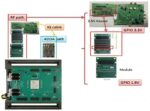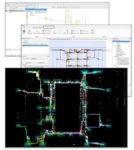In the rapidly evolving landscape of artificial intelligence (AI), the concept of machine unlearning has emerged as a fascinating and crucial area of research. While the traditional paradigm of AI focuses on training models to learn from data and improve their performance over time, the notion of unlearning takes a step further by allowing AI systems to intentionally forget or weaken previously acquired knowledge. This concept draws inspiration from human cognitive processes, where forgetting certain information is essential for adapting to new circumstances, making room for fresh insights, and maintaining a balanced and adaptable cognitive framework.
Machine Learning vs Machine Unlearning
Machine Learning and Machine Unlearning are two concepts related to the field of artificial intelligence and data analysis. Let’s break down what each term means:
- Machine Learning: Machine Learning (ML) is a subset of artificial intelligence that involves the development of algorithms and models that enable computers to learn from and make predictions or decisions based on data. In other words, it’s the process of training a machine to recognize patterns and relationships within data in order to make accurate predictions or decisions in new, unseen situations.
Machine Learning typically involves the following steps:
- Data Collection: Gathering relevant and representative data for training and testing.
- Data Preprocessing: Cleaning, transforming, and preparing the data for training.
- Model Selection: Choosing an appropriate algorithm or model architecture for the task at hand.
- Model Training: Feeding the data into the chosen model and adjusting its parameters to learn from the data.
- Model Evaluation: Assessing the model’s performance on unseen data to ensure it’s making accurate predictions.
- Deployment: Integrating the trained model into real-world applications for making predictions or decisions.
Common types of Machine Learning include supervised learning, unsupervised learning, and reinforcement learning.
- Machine Unlearning: Machine Unlearning is not a widely recognized term within the field of AI and Machine Learning. However, if we consider the concept metaphorically, it could refer to the process of removing or updating the knowledge acquired by a machine learning model. In a sense, this could be seen as “unlearning” or “forgetting” certain patterns or information that the model has learned over time.
In practice, there are a few scenarios where we might perform a form of “machine unlearning”:
- Concept Drift: Over time, the underlying patterns in the data may change, rendering a trained model less accurate or even obsolete. To adapt to these changes, the model may need to be retrained with new data, effectively “unlearning” the outdated patterns.
- Privacy and Data Retention: In situations where sensitive data is involved, there might be a need to “unlearn” certain information from the model to comply with privacy regulations or data retention policies.
- Bias and Fairness: If a model has learned biased patterns from the data, efforts might be made to “unlearn” those biases by retraining the model on more diverse and representative data.
While “machine unlearning” is not a well-defined concept in the context of machine learning, it could refer to the processes of updating, adapting, or removing certain knowledge or patterns from a trained model to ensure its accuracy, fairness, and compliance with changing requirements.
The Importance of Adaptability in AI
Adaptability is a cornerstone of intelligence, both human and artificial. Just as humans learn to navigate new situations and respond to changing environments, AI systems strive to exhibit a similar capacity to adjust their behavior based on shifting circumstances. Machine unlearning plays a pivotal role in fostering this adaptability by allowing AI models to shed outdated or irrelevant information. This enables them to focus on current and relevant data, patterns, and insights, thereby improving their ability to generalize, make predictions, and respond effectively to novel scenarios.
One of the key advantages of adaptability through machine unlearning is the mitigation of a phenomenon known as “catastrophic forgetting.” When AI models are trained on new data, there is a risk that they may overwrite or lose valuable knowledge acquired from previous training. Machine unlearning addresses this challenge by selectively discarding less crucial information, preserving the integrity of previously learned knowledge while accommodating new updates.
Strategies for Implementing Machine Unlearning
Implementing machine unlearning techniques requires innovative approaches that strike a balance between retaining valuable knowledge and letting go of outdated or irrelevant data. Several strategies are being explored to achieve this delicate equilibrium:
1. Regularization Techniques:
Regularization methods, such as L1 and L2 regularization, have traditionally been employed to prevent overfitting in AI models. These techniques penalize large weights in neural networks, leading to the weakening or elimination of less important connections. By applying regularization strategically, AI models can be nudged towards unlearning specific patterns while retaining essential information.
2. Dynamic Memory Allocation:
Inspired by human memory processes, dynamic memory allocation involves allocating resources within an AI system based on the relevance and recency of information. This enables the model to prioritize recent and impactful experiences while gradually reducing the influence of older data.
3. Memory Networks and Attention Mechanisms:
Memory-augmented neural networks and attention mechanisms offer avenues for machine unlearning. Memory networks can learn to read, write, and forget information from a memory matrix, emulating the process of intentional forgetting. Attention mechanisms, on the other hand, allow AI models to selectively focus on relevant data while gradually downplaying less pertinent information.
4. Incremental Learning and Lifelong Adaptation:
Machine unlearning is closely intertwined with the concept of incremental learning, where AI models continuously update their knowledge with new data while also unlearning or adjusting their understanding of older data. This approach mimics the lifelong learning process in humans, enabling AI systems to accumulate and refine knowledge over time.
Applications of Machine Unlearning
The concept of machine unlearning has far-reaching implications across various domains and applications of AI:
1. Copyright Compliance:
AI models are trained on a vast amount of data, including copyrighted materials. If there’s a push for removing copyrighted content from AI models, it could enhance compliance with copyright laws and regulations. This might be seen as a positive step by copyright holders and advocates for stronger intellectual property protection.
2. Personalized Recommendations and Content Delivery:
In the realm of content delivery and recommendation systems, machine unlearning can enhance personalization by allowing AI models to forget outdated user preferences. This ensures that recommendations remain relevant and reflective of users’ evolving tastes.
3. Healthcare and Medical Diagnosis:
Healthcare AI systems can benefit from machine unlearning by adapting to changing patient conditions and medical knowledge. By unlearning outdated medical data and prioritizing recent research findings, AI models can provide more accurate and up-to-date diagnostic insights.
4. Autonomous Vehicles and Robotics:
Machine unlearning can play a pivotal role in autonomous systems such as self-driving cars and drones. These systems can unlearn outdated sensor data and environmental features, enabling them to make real-time decisions based on current and relevant information.
5. Ethical Considerations and Bias Mitigation:
Machine unlearning holds the potential to address ethical concerns in AI, particularly related to bias and fairness. By unlearning biased patterns or associations present in training data, AI models can reduce the perpetuation of unfair decisions and outcomes.
Ethical Implications and Considerations
While machine unlearning offers numerous benefits, it also raises ethical questions and considerations:
1. Transparency and Accountability:
Machine unlearning could potentially complicate the transparency and interpretability of AI systems. If models are allowed to intentionally forget certain information, it might become challenging to trace the decision-making process and hold AI accountable for its actions.
2. Privacy and Data Retention:
The intentional forgetting of data aligns with privacy principles, as AI models can discard sensitive or personal information after its utility has expired. However, striking the right balance between unlearning for privacy and retaining data for accountability remains a challenge.
3. Unintended Consequences:
Machine unlearning, if not carefully managed, could lead to unintended consequences. AI systems might forget critical information, resulting in poor decisions or diminished performance in specific contexts.
4. Bias Amplification:
While machine unlearning can contribute to bias mitigation, it is essential to consider the potential for inadvertently amplifying biases. The process of unlearning might introduce new biases or distort the model’s understanding of certain data.
The Road Ahead: Challenges and Future Directions
The exploration of machine unlearning is still in its infancy, and numerous challenges lie ahead:
1. Developing Effective Algorithms:
Designing algorithms that enable AI models to unlearn effectively and intelligently is a complex task. Balancing the retention of valuable knowledge with the removal of outdated information requires innovative approaches.
2. Granularity and Context:
Determining the appropriate granularity and context for unlearning is essential. AI models must discern which specific data points, features, or relationships should be unlearned to optimize their performance.
3. Dynamic and Contextual Adaptability:
Machine unlearning should facilitate dynamic and contextual adaptability, allowing AI systems to forget information based on shifting priorities and emerging trends.
4. Ethical Frameworks:
As with any AI development, ethical considerations should guide the implementation of machine unlearning. Establishing clear ethical frameworks for unlearning processes is essential to ensure accountability, fairness, and transparency.
The Future
While the journey towards fully realizing machine unlearning is marked by challenges and ethical considerations, it holds the promise of unlocking new dimensions of AI’s potential. As researchers and practitioners continue to explore innovative strategies, algorithms, and applications, machine unlearning could pave the way for a more nuanced, contextually aware, and ethically conscious generation of AI systems. Ultimately, the integration of machine unlearning into the AI landscape could lead to systems that not only learn and remember but also adapt and forget, mirroring the intricate dance of human cognition.
Ahmed Banafa’s books
Covering: AI, IoT, Blockchain and Quantum Computing
Also Read:
The Era of Flying Cars is Coming Soon
AI and the Future of Work
Narrow AI vs. General AI vs. Super AI










